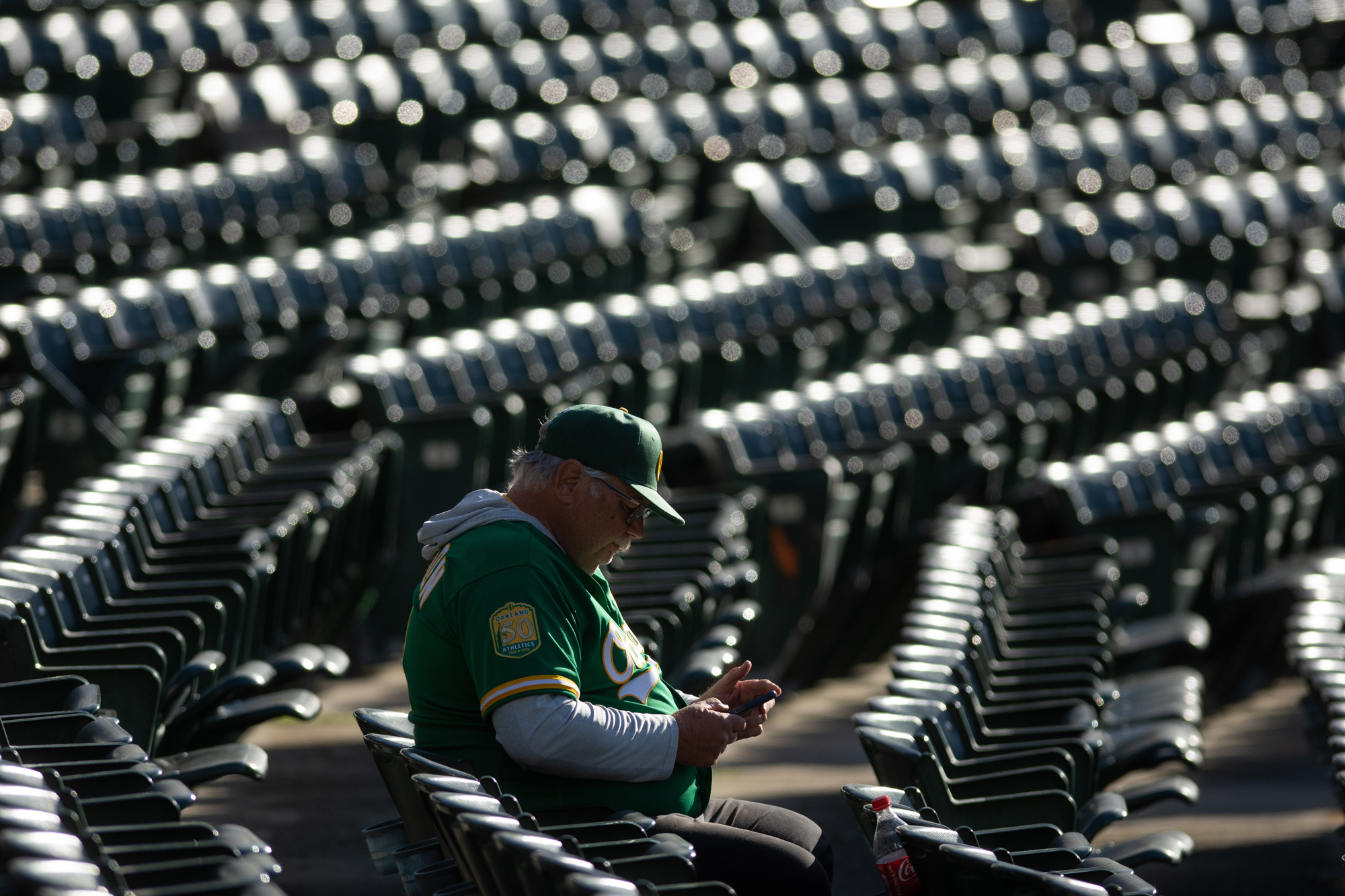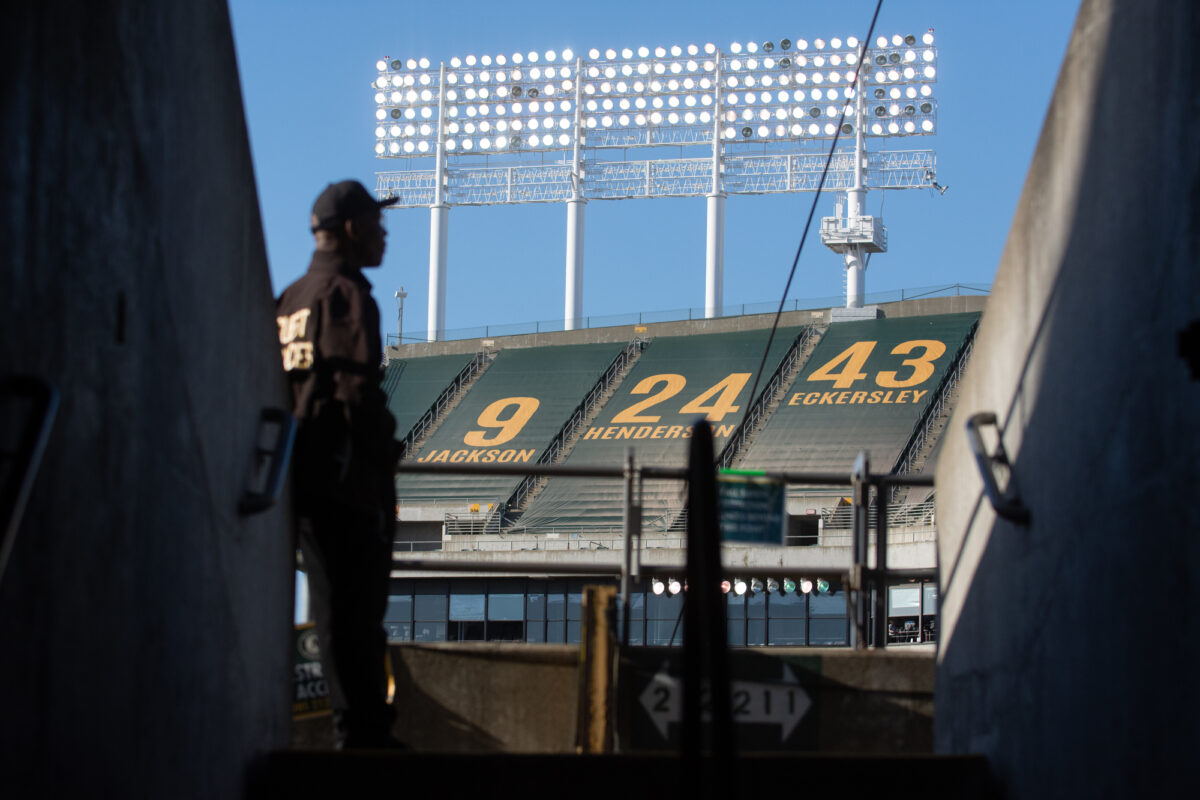Sources: Clark County concerned A’s stadium public financing could fall on taxpayers

Clark County officials are concerned that taxpayers could end up on the hook to cover debt payments for the county’s part of the $395 million in public money that the Oakland A’s are seeking to build a $1.5 billion baseball stadium in Las Vegas, sources told The Nevada Independent on Friday.
In discussions with representatives from the Major League Baseball team and state lawmakers, Clark County negotiators are worried that under a worst-case scenario, county property taxes would have to be increased to help fund the debt covering the bonds if the stadium wasn’t generating enough revenue or if there weren’t enough funds in the reserve account.
In particular, sources said the county was hesitant given that it needed to dip into a debt service reserve fund to make similar bond payments for Allegiant Stadium during the height of the COVID pandemic, and given examples from other cities where local governments ended up using general fund dollars to make payments on the bonds.
A source familiar with the negotiations said Friday that Clark County’s concerns are contributing to the hold upon any agreement on legislation required for the public funding piece for the proposed 30,000-seat, retractable roof ballpark. The Nevada Independent granted anonymity to the sources so they could speak freely about the status of negotiations.
Other sources close to the negotiations have indicated that disagreements over how much the state and county should contribute to a public financing package amid changes to the stadium’s proposed location have also led to delays in the legislative process. It is unclear when, or if, a formal bill will arrive.
The A’s have proposed building the stadium on a 9-acre site on the Strip near the Tropicana Las Vegas.
The public funding crunch comes as Nevada lawmakers are only willing to contribute up to $195 million in transferable tax credits for stadium construction and want the rest to come from county-issued bonds paid by taxes generated on the ballpark site.
There are fewer than 20 days before the end of the state’s 120-day legislative session. Any public money for the project will need to be approved by both houses of the Legislature by June 5, or the Legislature could need to deal with the matter in a special session, which can be called by the governor or a two-thirds majority of lawmakers.

County debt issues
The county’s reserve fund serves as a backup bucket of money in case something were to go sideways with the stadium’s tax revenue. A source with knowledge of the county’s fiscal operations said it has not been determined the debt-to-revenue coverage ratio for bonds covering the proposed baseball stadium.
During the pandemic, Clark County twice dipped into the reserve fund for Allegiant Stadium to service the $750 million in bonds covering the public’s obligation for the $1.9 billion, 65,000-seat stadium for the Las Vegas Raiders.
According to a source, as of June 30, 2022, the debt service balance was $66 million, roughly 73 percent of the full capacity figure of $90.2 million The Allegiant Stadium fund is expected to be at $82 million by the end of next month as the county has been replenishing the balance with economic recovery funds.
Clark County would have to create a separate debt service account to cover any proposed bonds for the A’s stadium.
The fund was designed to cover two years of full debt service payments if no money was generated by the 0.88 percent hotel room tax in Clark County that lawmakers approved during a 2016 special legislative session. Fans were not allowed to attend games at Allegiant during the 2020 season.
In the past two years, hotel taxes in Chicago that were pledged to pay for the bonds used in the renovation of the Soldier Field — home of the NFL’s Chicago Bears — fell short. The city had to cover the costs, $9 million in fiscal year 2023 and $29 million in fiscal year 2022.
Funding back-and-forth
The companies that operate the Tropicana and own the land said they would give the A’s the site free of charge. The Tropicana is expected to close and be demolished at some point, then be replaced by a new resort.
The A’s were initially looking to secure legislative support for a $500 million public funding package involving tax credits and the creation of a special taxation district to help fund stadium construction.
The $500 million request came on April 20 when the team announced that it reached a “binding agreement” with Red Rock Resorts to acquire 49 acres west of Interstate 15 for the stadium and an entertainment district with restaurants, stores and other attractions.
However, the public financing piece was reduced by $105 million when the team abandoned its original location two weeks later for the free site owned by real estate investment trust Gaming & Leisure Properties (GLPI). Bally’s Corp. operates the Tropicana through a lease agreement with GLPI.
Along with the free land, GLPI agreed to provide the team with up to $175 million toward “certain shared improvements within the future development in exchange for a commensurate rent increase.” As part of the move to the different site, the entertainment district piece of the stadium project was eliminated.
Reporter Tabitha Mueller contributed to this report.
